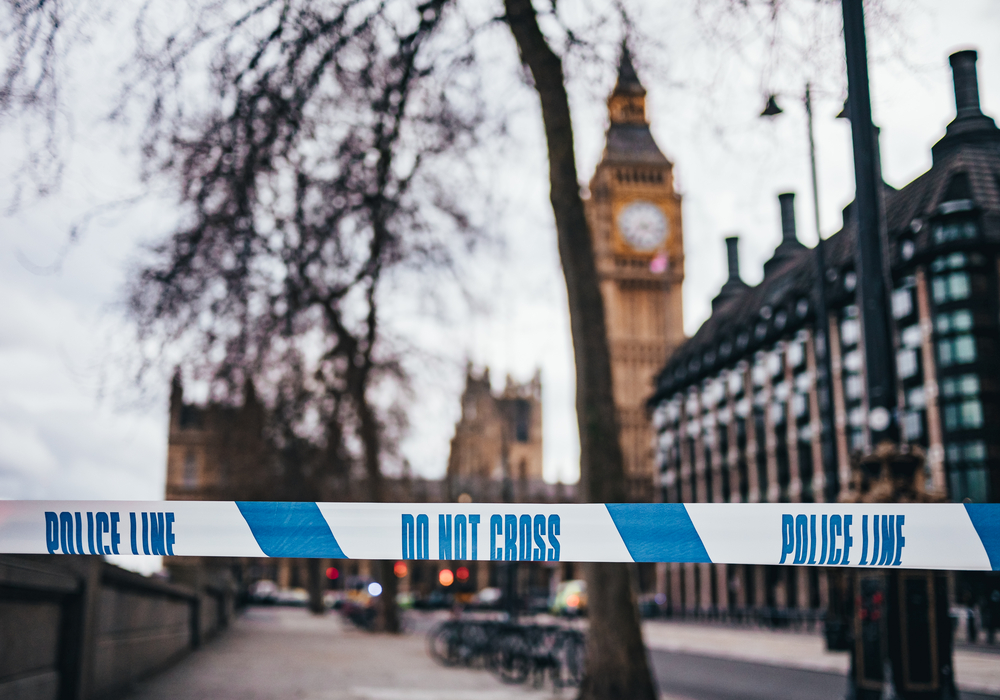
- Select a language for the TTS:
- UK English Female
- UK English Male
- US English Female
- US English Male
- Australian Female
- Australian Male
- Language selected: (auto detect) - EN
Play all audios:
Six months seems an unimaginably long sentence — a lifetime, indeed. Yet this is how long the Deputy Chief Medical Officer, Jenny Harries, has given us until we can get back to something
like normal. Social distancing will last another two to three months, but many restrictions will remain in place for longer, to ward off a “second peak” of coronavirus later in the year. Any
hopes of getting the economy and society moving again in time for the usual September “back to school” moment have, provisionally at least, been dashed. Dr Harries and her temporarily
self-isolating boss, Chris Whitty, have warned for some time that we are in this for “the long haul”. Boris Johnson, also suffering from Covid-19 but by no means incapacitated, seems buoyant
despite the alarming rise in death tolls. Today’s Cobra meeting will be held by video link. This is the new normal, for Downing Street no less than the rest of the country and, indeed, some
2.6 billion people living under lockdown across the world. So far, fewer than one in 100,000 of these has died. Are we overreacting? In a typically unsentimental column at the weekend,
Dominic Lawson showed that the strict calculus known as Qaly (“quality-adjusted life year”), by which the NHS normally estimates the cost of treatment for patients, has not been applied in
the case of coronavirus. The hit to the economy is likely to be much greater than what would normally be considered an acceptable cost per patient. A strictly utilitarian view of the crisis
might have dictated a less draconian response and a much larger death toll. Ministers understood that this was an option weeks ago but rejected it. Many enemies of the Government, plus
those whose businesses and livelihoods are most under pressure, have accused it of overreacting. They warn that if Dr Harries gets her way, the country will cripple itself for a generation.
Over the next six months, the chorus of criticism is bound to grow louder. Yet there is little sign so far that the Prime Minister is disposed to listen to these jeremiads. Why not? One
reason is that the present policy is overwhelmingly popular with the public. Opinion polls have shown well over 90 per cent approval for the lockdown. People of all parties and none almost
unanimously support the Government’s handling of the crisis. Boris Johnson’s personal popularity has also gone through the roof. He now enjoys the kind of ratings that have only ever been
seen in wartime. No Tory leader since Margaret Thatcher during the Falklands War has been anything like as popular. If anything, Johnson’s cool response to contracting coronavirus has
reinforced public confidence in his judgment. During the Blitz, Churchill would secretly watch the nighttime bombing from the roof of the Shell building in the Strand — foolhardy conduct for
an indispensable war leader, perhaps, but of a piece with his desire to share the risks of the population at large. Boris has always dreamt of his Churchill moment. Now that he has got it,
the country is willing him on. Once again, the Prime Minister has confounded the sceptics. The extent to which he relishes danger and thrives in adversity should not be underestimated. One
friend of his recalls a conversation with him in early January, just as the first intimations of a Chinese epidemic were reaching the West. How was he coping with the rigours of life in
Downing Street? A seraphic smile spread across the Johnsonian features. “I absolutely _love _it!” The politics of pandemic are perilous in the extreme. Get it wrong, and the consequences are
horrific: hospitals unable to cope, care homes neglected, morgues overflowing with corpses. No Government could survive that kind of catastrophe. We must be grateful that the NHS has,
belatedly, been given the tools to finish the job of treating tens of thousands of Covid-19 patients. Leaving the elderly and the sick to their fate would not be decent. So we should expect
a cautious, even overcautious, policy on getting back to normal. Social distancing has been compared to the wartime blackout, but such parallels are inexact. Another wartime analogy is
perhaps more apposite. In 1940, the British were faster to adapt to a war economy and readier to accept the full societal consequences than the Germans. Churchill knew that he could promise
“nothing but blood, toil, tears and sweat” and the British would respond willingly. Hitler was less sure and, initially at least, demanded less of his people. The result was that the British
produced more aircraft than the Germans during the crucial period when they stood alone. Today, as then, we must accept a recession, perhaps also a cut in living standards, as the price of
victory. It took years for Britain to recover after six years of world war. After six months of pandemic, recovery should be easier and come sooner, but the time scale is unpredictable.
Whatever the outcome, we can expect younger generations to emerge from this ordeal braver and more resilient, with a strong sense of duty and community. Like the wartime generation, our
posterity will know what it is like to make sacrifices for one’s country. That gain in generational confidence cannot be quantified, but it is real. The parents and grandparents of the young
men and women on the front line in this fight against the virus are grateful to them, as indeed they should be. Never in the field of human medicine has so much been owed by so many to so
few.








